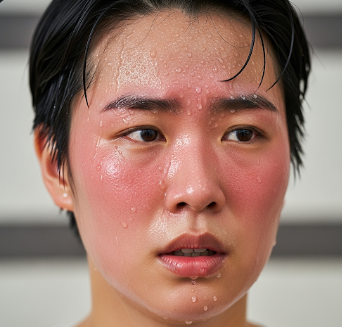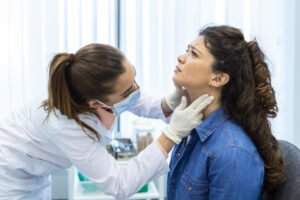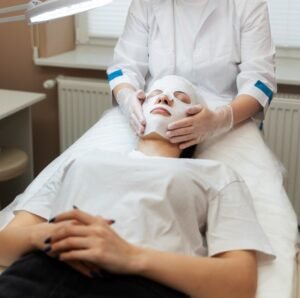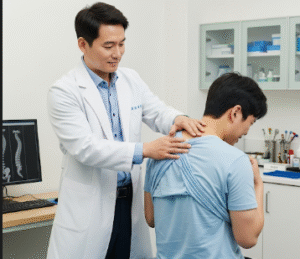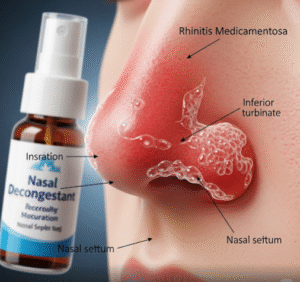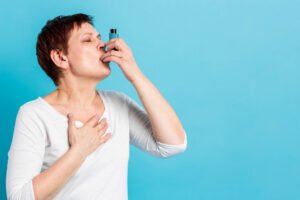➤ Overview
Excessive sweating, medically known as hyperhidrosis, is a condition in which the body produces more sweat than is necessary for temperature regulation. This can affect the underarms, hands, feet, face, or other parts of the body, and can significantly impact daily life, emotional well-being, and social interactions.
In South Korea, hyperhidrosis is diagnosed and treated by dermatologists and specialized clinics. Treatment options range from topical therapies to advanced procedures, allowing patients to regain confidence and manage symptoms effectively.
➤ Key Facts
→ Hyperhidrosis can be primary (idiopathic) or secondary due to underlying medical conditions.
→ Primary hyperhidrosis often begins in childhood or adolescence, while secondary forms can occur at any age.
→ It affects both men and women equally.
→ In Korea, evaluation includes clinical examination, sweat tests, and sometimes laboratory investigations to rule out underlying causes.
→ Excessive sweating can lead to skin infections, odor, emotional distress, and social embarrassment.
→ Common triggers include stress, heat, exercise, or emotional stimuli, though primary hyperhidrosis may occur without triggers.
→ Early management can improve quality of life and prevent complications.
➤ What is Excessive Sweating (Hyperhidrosis)?
Hyperhidrosis is an overactivity of the sweat glands, leading to uncontrolled and excessive sweating:
→ Primary hyperhidrosis – Occurs without underlying medical conditions, often localized (palms, soles, underarms, face).
→ Secondary hyperhidrosis – Caused by systemic diseases like thyroid disorders, diabetes, infections, or menopause.
→ Focal vs. generalized – Focal sweating is limited to specific areas; generalized affects the whole body.
→ Symmetric vs. asymmetric – Most primary hyperhidrosis cases are symmetric.
→ Emotional triggers – Sweating can worsen in anxiety, stress, or excitement.
→ Night sweating – More common in secondary hyperhidrosis, often indicating systemic issues.
Korean dermatologists use clinical scales and diagnostic tests to classify the severity and type of hyperhidrosis for tailored treatment.
➤ What Symptoms are Related to Excessive Sweating?
Symptoms can range from mild dampness to severe dripping sweat, with functional and emotional consequences:
→ Visible wetness on hands, feet, underarms, or face.
→ Frequent clothing changes due to sweat saturation.
→ Skin maceration or irritation – Softened skin prone to infection.
→ Foul odor due to bacterial overgrowth on moist skin.
→ Difficulty gripping objects – Especially with palmar hyperhidrosis.
→ Embarrassment or social withdrawal – Emotional impact is significant.
→ Sleep disruption – Night sweats affecting rest.
→ Secondary skin conditions – Fungal infections like athlete’s foot or intertrigo.
➤ What Causes / Possible Causes?
Excessive sweating may be primary or secondary, and understanding the cause is crucial:
→ Primary hyperhidrosis – Genetic predisposition, overactive sympathetic nervous system.
→ Secondary hyperhidrosis – Medical conditions including:
→ Endocrine disorders – Hyperthyroidism, diabetes, menopause.
→ Infections – Tuberculosis, HIV, or chronic bacterial infections.
→ Medications – Antidepressants, antipyretics, or hypoglycemic agents.
→ Neurological disorders – Parkinson’s disease, spinal cord injuries.
→ Emotional or psychological factors – Stress, anxiety, or panic attacks.
→ Environmental factors – High temperatures or humid climates may exacerbate sweating.
→ Hormonal fluctuations – Puberty, pregnancy, or menopause.
➤ When Should I See My Doctor?
Medical consultation is recommended if excessive sweating affects daily life or indicates an underlying condition:
→ Sweating interferes with work, social life, or daily tasks.
→ Night sweats occur without obvious cause.
→ Sudden onset in adults, suggesting secondary hyperhidrosis.
→ Localized swelling with odor, pain, or skin changes.
→ Associated fever, weight loss, or other systemic symptoms.
→ Family history of primary hyperhidrosis with severe impact on lifestyle.
→ If topical or home remedies fail to control symptoms.
➤ Care and Treatment
Treatment focuses on reducing sweat production, managing skin health, and improving quality of life:
→ Topical treatments – Aluminum chloride hexahydrate antiperspirants.
→ Oral medications – Anticholinergics to reduce generalized sweating.
→ Botulinum toxin (Botox) injections – Block nerve signals to sweat glands, commonly used for underarms, palms, and soles.
→ Iontophoresis – Electrical currents to reduce palmar or plantar sweating.
→ Lifestyle measures – Breathable clothing, absorbent materials, and stress management.
→ Surgery – Endoscopic thoracic sympathectomy in severe, refractory cases.
→ Skin care – Antimicrobial cleansers to prevent infection.
→ Behavioral therapy – Cognitive techniques to manage anxiety-related sweating.
➤ Treatment Options in Korea
South Korea offers advanced, safe, and effective hyperhidrosis treatments at specialized dermatology and cosmetic clinics:
Diagnosis in Korea
→ Clinical assessment – Evaluating severity, triggers, and affected areas.
→ Gravimetric or Minor starch-iodine test – Measures sweat production objectively.
→ Laboratory tests – Rule out secondary causes like thyroid or metabolic disorders.
Medical Treatments in Korea
→ Prescription-strength topical antiperspirants – Aluminum chloride or aluminum-zirconium compounds.
→ Oral medications – Anticholinergic agents under medical supervision.
→ Botulinum toxin therapy – Local injections to temporarily block sweat gland activity.
Advanced Therapies in Korea
→ Iontophoresis – Repeated sessions to reduce palmar or plantar sweating.
→ Endoscopic thoracic sympathectomy – Minimally invasive surgery for severe primary hyperhidrosis.
→ Combination therapy – Using medications, Botox, and lifestyle measures for best outcomes.
Rehabilitation & Support in Korea
→ Education on long-term skin care and prevention of secondary infections.
→ Psychological support for patients experiencing social anxiety or embarrassment.
→ Regular follow-up to monitor efficacy, side effects, and recurrence.

